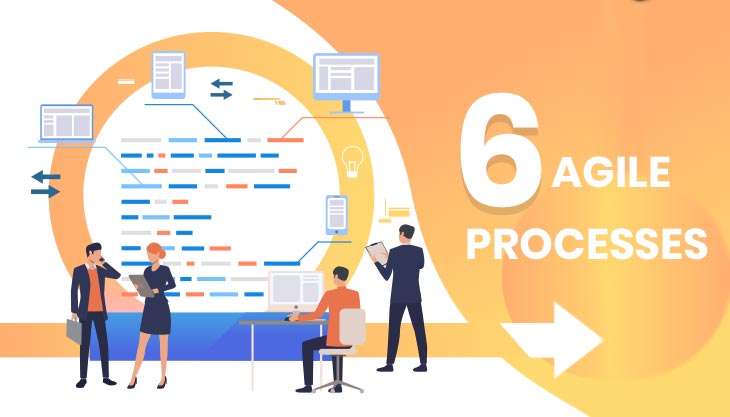INTRODUCTION:
Softwares are the set of principles, instruction, programs used for the execution of data. There are several methods in the production of the software. There are several methods in building the software. The creation of software is called software development life cycle. There are various process models in the software development cycle. When developing software there is always a method used called the normal waterfall method in these changing trends developers now prefer new adaptive methodologies called agile methodology. Here in this article, we explain about the agile methodologies for software development And the process carried out in agile methodology.
WHAT IS AGILE METHODOLOGY?
It is the methodology that refers to several software development methodologies where solutions and requirements come from self-organizing teams. It is a strict process that involves random adaptation and inspection. It includes teamwork and best engineering practice which results in the rapid delivery of high-quality software. It is the combination of an iterative and incremental process model that is more focused on customer satisfaction and it involves the following phases planning, requirement analysis, design, coding, and acceptance testing. Agile means every project must be handled by a different approach and already existing methods are altered in order to suit the project. During the development cycle, it assists in the project direction. It provides a solution to customer feedback in the middle of the developing project.
The agile manifesto principle involves customer collaboration, response to change, individual and interaction. Here the agile uses an adaptive approach. There is no proper planning but there are well-featured end products. In agile, the project is breaking as several packets of modules each module has been considered as an individual project involving constant collaboration with stakeholders and iteration at every stage of the process. In agile methodology, several teams work on a specific process of the project called sprints. And it is more focused on how the end product will look and concentrates on customer expectations Agile methodology begins with clients describing how the end product will be used and how the problem will be solved. It promises clean delivery of the individual parts of the software. The four core values of outlines of agile methodologies, collaboration instead of negotiations, individual interaction are more important than process and tool, focus more on working software than documentation and focus on responding to change. These are the process mixtures of agile methodology.
-
Concept
First of all, we should know the concept of the project. At the starting of the project, we should define clear business needs and what your project is approaching. Identify your target audience and the statement of need. First, build your pitch in order to achieve your goal.
-
Inception
Team resources should be identified and funding should be organized and the environment required and the basic needs and requirements are planned. And build your product roadmap map in order to go flow with the work process. Try to create goal-oriented maps to focus on objectives, removing technical debts, raising in engagement, etc.
- Iteration / Construction
The construction team should work on the basis of customer needs and customer requirements should be communicated clearly and constructed by breaking into smaller packets of modules.
-
Release QA
Testing should be done in case of bugs. It should be fixed in case of any lag or bugs and it should be rectified immediately. It is an integrated system of methods and principles. The document should be developed giving a brief explanation about every process undergone.
-
Production - Ongoing support of the software
It is about the practices and disciplines of supporting the applications which will be used by the end-users. A team should be allocated for monitoring servers, incident management, and scheduled jobs. And the team includes engineers, developers and database admins.
-
Retirement
The final step is the retirement of the project where the prototypes are maintained for the future references of the project. The aim of this phase is the removal of the system from production, known as system sunsetting. It is removed for several reasons including it should be replaced by COTS systems such as SAP or Oracle financials, the release is no longer supported, the system is no longer needed to support business models, it became obsolete or redundant.
CONCLUSION:
Agile methodology is the widely accepted software process models and it promotes teamwork and it is the very realistic approach of the development. It is adaptable for changing requirements and delivers possible solutions at an earlier stage. There will be minimum rules and documentation of the process is followed with disciplines there is flexibility for developers and easy to manage. It also has demerits such as this method is not suitable for complex requirements. Risk in maintainability, sustainability and mostly depends on the customer if the customer is not clear there is a possibility of misguidances and the minimum documents are generated which is a backlog for the future investigation's lack of documentation can create a problem when allocates to new resources which develop a loss of the project.

















Post Comments